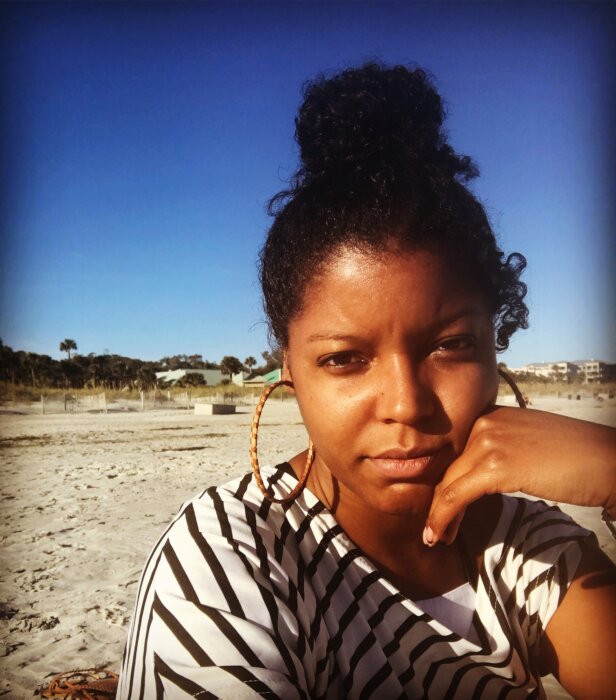Shinnecock Voices: Once We Were Matriarchs, Women Are Designed for Leadership

As a former public servant who romanticizes our previous trustee system for its inclusion of a 13-member Tribal Council — our own governance structure that developed organically and was made up of mostly women — I must note that Lisa Goree being named Shinnecock’s new chairwoman is perhaps as significant as being the first female elected to the former three-man trustee board.
Chairwoman Goree is blazing a trail of new opportunities for women in tribal leadership by taking up space in ways no Shinnecock female has been allowed to do in more than 230 years.
If we can all only take a step back to envision our future through the eyes of our ancestors, perhaps the idea of a Shinnecock COT board made up of four or five women would be seen more as an aspiration than the threat that westernized political systems have colonized us to believe.
Perhaps we would be able to experience in real time what our ancestors always knew: Women are designed for leadership. This fact is not only supported by science, but also by ancient indigenous wisdom.

Scientifically, the prefrontal cortex, which dictates social behavior, is larger and matures more rapidly in women. Women also have a larger anterior cingulate cortex, which is critical to impulse control, decision-making, and guiding behavioral outcomes. Men do have a larger amygdala; however, this is also known as the lizard brain, which leads to increased emotions, aggression, impulsivity, violence and ADHD.
The anterior insula, the part of the brain that is associated with empathy, is larger and more active in women. This is also the region of the brain that recognizes signals from the gut microbiota where “gut feeling” is processed — meaning the notion of a woman’s intuition is real, which is where science and ancient wisdom overlap.
In his 1911 prose The Soul of an Indian, Dakota philosopher Ohiyesa, also known as Charles Alexander Eastman, wrote that women are the moral salvation of our people.
According to Ohiyesa, his elders believed that as life givers, women were regarded to have superior spiritual insight.
He goes on to explain that while both men and women were expected to perform equally in skill and physical endurance to accomplish the arduous responsibilities of daily survival, each had specific roles. Men served outwardly, as the spokesperson for the family and trained disciplines, while women held supreme law over the home and children, an honor entrusted to her by virtue of her ability to give life.
It is believed that first education as humans begins in our mother’s womb. During this time, women are supposed to remain isolated and vigilant of the energy she allows into her child’s world.
In this same way, women were expected to provide spiritual guidance for her family. Those who proved to be more spiritually endowed were looked to by members of her extended family for practical guidance in the decision-making for the well-being of the community. These women became known as clan mothers.
In comparing our Anishnaabe teachings, we find at the heart of this way of life that mutual respect is foundational to the bond between men and women. This teaching was not only fostered through marriage but also underpinned how our indigenous communities were able to endure as matriarchal societies for thousands of years.
Naturally, colonization and the perversion of patriarchal ideals undermined the original way of life for our Shinnecock ancestors.
In 1792, when New York State forced our community to adopt a three-man trustee system to advance state land transactions, Shinnecock women’s voices were silenced. Men were acculturated to the mindset that female insights had no place in the business of American politics, and eventually that spilled over into other aspects of tribal life.
Echoes of our old way lived only briefly early on. A few Shinnecock elders can recall times from their childhood when men looking to run for tribal leadership sought validation from the matriarch of the family. Overall, once our matriarchal society dissolved, it took Shinnecock women 200 years to even get a seat at the table.
Thanks to three decades of suffrage actions led by Shinnecock historians/activists Lois Hunter and Harriett Crippen Brown Gumbs, in 1992 Shinnecock women finally earned the support of Shinnecock men to vote to allow women the right to vote in tribal meetings. It took an additional two years for women to earn the right to vote in trustee elections.
When the three-man trustee board transitioned into the current seven-member Council of Trustees (COTs) over the past decade, new criteria required a position be filled by at least one senior-age woman, known as the Sunksqua. Notwithstanding current Sunksquas and Linda Franklin and her predecessor Lucille Bosley, Nicole Dennis Banks, Kelly Dennis and now Binca Collins are the only three women to have bravely succeeded being elected to general seats of the new COT board. That is, until the recent appointment of Goree as the Shinnecock’s new chairwoman.
Now that three of our seven COTs are women, it brings hope for a much-needed energy shift that hopefully will bring healing to our community as a whole, just the way natural order intended.
We can only pray this change will be lasting and restorative.

Dyáni Brown is a citizen of the Shinnecock Nation. She is a freelance writer, television and film entrepreneur, and communication and marketing specialist. To view her portfolio, visit about.me/dyanibrown.
“Shinnecock Voices” is a monthly column in which citizens of the Shinnecock Nation share stories and opinions and discuss the projects and campaigns they’re working on, to allow readers an inside view into their incredible community.









